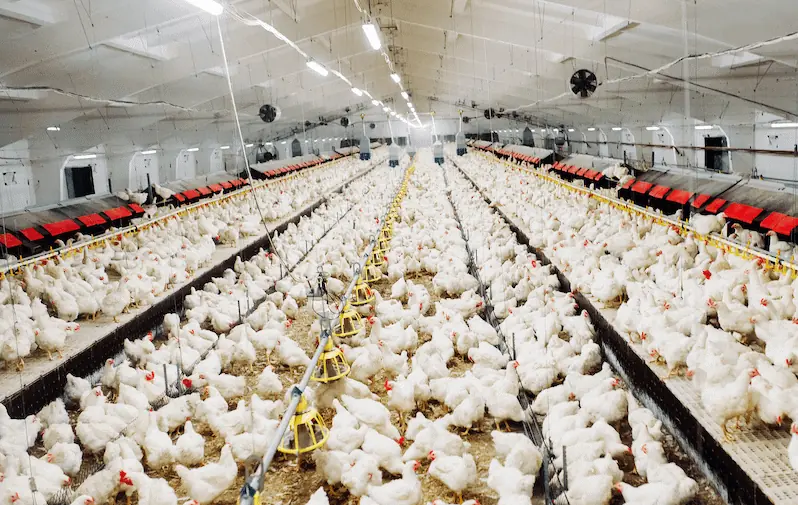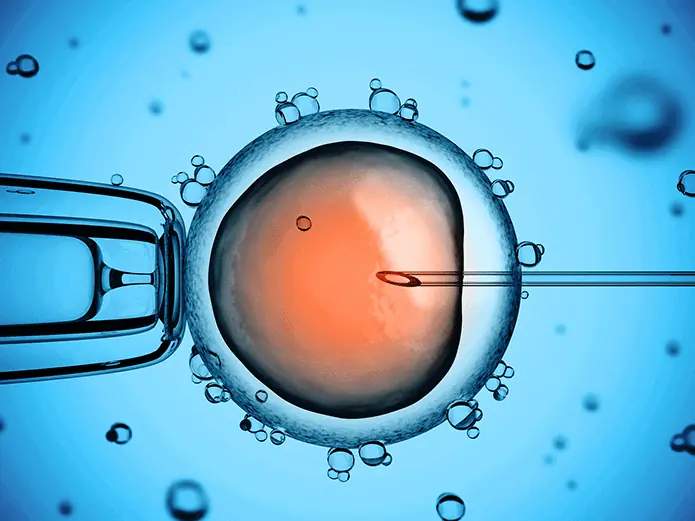


Chicken the Egg and the Terahertz
When it comes to improving agricultural practices and increasing productivity, technology plays a significant role. One such technology that has the potential to revolutionize the farming industry is terahertz technology. Although research on the use of terahertz waves for egg production in chickens is limited, the technology has shown promise in other areas of agriculture and food science.
What is Terahertz Technology?
Terahertz (THz) technology is a relatively new and cutting-edge technology that uses electromagnetic radiation to penetrate through solid and opaque objects, such as food and agricultural products. Terahertz waves are in the electromagnetic spectrum between microwave and infrared radiation, with frequencies ranging from 0.1 THz to 10 THz. Terahertz waves have unique properties that make them ideal for certain applications, including:
- Non-ionizing radiation: Terahertz waves are non-ionizing, which means they do not damage living tissue, making them safe for use in many applications.
- Low energy: Terahertz waves are low energy, making them safe for use in many applications and reducing the risk of damage to sensitive products.
- Penetration: Terahertz waves can penetrate through non-metallic objects, such as food and agricultural products, providing detailed images and information about the internal structures of these products.
- Unique absorption properties: Terahertz waves are absorbed by different materials in different ways, making them useful for identifying and analyzing specific materials or chemicals.
Applications of Terahertz Technology in Agriculture and Food Science
Terahertz technology has shown promise in a variety of agricultural and food science applications, including:
Feed Analysis
Feed quality is critical for maintaining the health and productivity of livestock, including chickens. By using terahertz technology, farmers can analyze the chemical makeup and quality of feed, ensuring that their chickens receive optimal nutrition and avoiding any potential health issues that could impact egg production. Terahertz technology can also be used to detect contaminants in feed, helping farmers avoid any potential problems that could affect egg production.
Plant Growth and Harvesting
Terahertz technology has the potential to improve plant growth and yield, which can indirectly impact egg production by providing additional food resources for chickens. Terahertz waves can penetrate plant tissue and provide detailed images and information about the internal structures of plants, allowing farmers to identify and address any issues that may be affecting plant growth and yield.
Egg Development and Inspection
Terahertz technology can also be used to inspect flaws in eggshells and track the maturation process of eggs. Terahertz waves have been shown to penetrate the eggshell and provide detailed images of the internal structures of the egg. This technology can help farmers identify any faults or abnormalities that may be affecting egg production.
The Potential of Terahertz Technology for Increasing Egg Production
Although research on the use of terahertz technology for egg production in chickens is limited, the technology has shown promise in other areas of agriculture and food science that can indirectly impact egg production. By analyzing feed quality, promoting plant growth, and monitoring the egg development process, farmers can ensure that their chickens are healthy and productive, which can ultimately lead to increased egg production.
Feed Quality Analysis
One of the critical factors affecting egg production in chickens is the quality of their feed. By using terahertz technology to analyze feed quality, farmers can ensure that their chickens are receiving optimal nutrition and avoid any potential health issues that could impact egg production. Terahertz waves can analyze the chemical makeup of feed and detect contaminants, allowing farmers to avoid any potential problems that could affect egg production. This technology can help farmers make informed decisions about their chickens’ diet, ensuring that they are getting the nutrients they need to produce high-quality eggs.
Plant Growth and Harvesting
Terahertz technology can indirectly impact egg production by promoting plant growth and increasing food resources for chickens. By using terahertz waves to analyze plant growth and yield, farmers can identify and address any issues that may be affecting plant health. This technology can help farmers ensure that their crops are healthy and productive, providing additional food resources for their chickens. Increased plant growth and yield can also reduce the cost of chicken feed, making egg production more cost-effective.
Egg Development and Inspection
Terahertz technology can be used to monitor the development of eggs and identify any issues that may be affecting egg production. By using terahertz waves to inspect eggshells, farmers can identify any flaws or abnormalities that may be affecting egg production. This technology can also be used to track the maturation process of eggs, allowing farmers to ensure that their eggs are of high quality and ready for market.
Conclusion
Terahertz technology has shown promise in a variety of agricultural and food science applications, including feed analysis, plant growth and harvesting, and egg development and inspection. Although research on the use of terahertz technology for egg production in chickens is limited, the technology has the potential to indirectly impact egg production by promoting the health and productivity of chickens. By using terahertz technology to analyze feed quality, promote plant growth, and monitor the egg development process, farmers can ensure that their chickens are healthy and productive, ultimately leading to increased egg production. As research in terahertz technology continues to expand, there is potential for even more applications in the agricultural industry that can benefit both farmers and consumers.

Terahertz & In Vetro Fertilization
Terahertz wave technology is a rapidly growing field of research with the potential to revolutionize many aspects of animal health and reproduction. One of these areas is in vitro fertilization (IVF). Scientists are currently exploring the use of terahertz waves in a variety of applications related to animal fertility, from monitoring and enhancing fertility to improving the efficiency of assisted reproductive techniques.
Terahertz Imaging in Animal Fertility
One of the most promising applications of terahertz technology in the field of animal fertility is imaging. Terahertz radiation has the unique ability to pass through biological tissues without causing any damage. This makes it possible to use terahertz waves for non-invasive imaging of reproductive organs and structures in animals.
Using terahertz technology, veterinarians could diagnose and monitor a variety of conditions that can impact fertility, including cysts, tumors, and inflammation. This could lead to earlier diagnosis and more effective treatment of these conditions, potentially improving fertility outcomes for animals.
Monitoring Hormone Levels with Terahertz Technology
Another potential application of terahertz technology in animal fertility is the monitoring of hormone levels. Terahertz waves have been shown to be capable of detecting changes in hormone levels, which could enable veterinarians to monitor estrus cycles and detect hormonal imbalances that could affect fertility.
This technology could also be used to monitor hormone levels during assisted reproductive techniques, such as artificial insemination or in vitro fertilization. By tracking changes in hormone levels, veterinarians could optimize the timing and dosage of medications used during these procedures, potentially improving their success rates.
Assisted Reproductive Procedures and Terahertz Technology
Terahertz technology could also improve the efficiency and effectiveness of assisted reproductive procedures in animals. One potential use of terahertz waves is in the controlled release of medications from nanoparticles. This technology could be used to deliver medications directly to the reproductive tract, improving their efficacy and reducing the risk of side effects.
Terahertz technology could also be used to optimize the conditions under which embryos are cultured during in vitro fertilization. By monitoring the temperature and humidity within the culture environment using terahertz waves, veterinarians could identify and address any issues that could impact embryo development and survival.
The Future of Terahertz Technology in Animal Fertility
While terahertz technology shows great promise in the field of animal fertility, research in this area is still in its early stages. However, as the technology continues to advance, it is likely that it will find even more applications in this field.
One area of particular interest is the use of terahertz technology in the analysis of sperm and eggs. By analyzing these cells using terahertz waves, veterinarians could identify any abnormalities or defects that could impact fertility. This could potentially lead to improvements in the quality of sperm and eggs used in assisted reproductive techniques, improving their success rates.
Overall, the potential impact of terahertz technology on animal fertility is significant. By providing new and innovative approaches to the diagnosis and treatment of conditions that impact reproduction, as well as optimizing assisted reproductive techniques, terahertz technology could improve fertility outcomes for animals and lead to better health and well-being for both animals and their owners.
Conclusion
Terahertz technology has the potential to revolutionize the field of animal fertility. From non-invasive imaging of reproductive structures to monitoring hormone levels and optimizing assisted reproductive techniques, this technology could significantly improve the outcomes of animal fertility treatments. While research on this topic is still in its early stages, the potential applications of terahertz technology are vast and promising.
Terahertz waves have the unique ability to pass through biological tissues without causing damage, making them an ideal tool for non-invasive imaging and monitoring of reproductive structures and hormone levels. This technology could also be used to optimize the conditions under which embryos are cultured during in vitro fertilization and improve the efficacy of medications used during assisted reproductive techniques.
As the technology continues to advance, it is likely that even more applications will be discovered. For example, terahertz technology could potentially be used to analyze sperm and eggs for abnormalities or defects that could impact fertility.
Overall, the potential impact of terahertz technology on animal fertility is significant. By providing new and innovative approaches to the diagnosis and treatment of conditions that impact reproduction, as well as optimizing assisted reproductive techniques, terahertz technology could improve fertility outcomes for animals and lead to better health and well-being for both animals and their owners.

Cows Milk Production and Terahertz
Terahertz wave technology is a relatively new and exciting field that has shown great potential in the agricultural industry. It is a type of electromagnetic radiation that lies between the microwave and infrared regions of the electromagnetic spectrum. Terahertz waves have the ability to penetrate materials such as paper, plastic, and even biological tissue, making them an ideal tool for analysis and quality control in a variety of industries, including food science and agriculture.
Terahertz Waves and Milk Analysis
One of the most promising applications of terahertz wave technology in agriculture is in the analysis of milk. Milk is a complex mixture of various compounds, including water, fat, protein, lactose, vitamins, and minerals. The composition of milk can vary depending on a variety of factors, such as the breed of cow, the animal’s diet, and the stage of lactation.
Traditionally, milk analysis has been done using methods such as chromatography and spectroscopy, which can be time-consuming and expensive. However, terahertz waves offer a faster and more cost-effective alternative. Terahertz waves can be used to determine the percentages of fat, protein, and water in milk, as well as detect impurities such as antibiotics or infections.
Research has shown that terahertz waves can be used to accurately measure the fat and protein content of milk. In a study published in the journal Food Chemistry, researchers used terahertz spectroscopy to analyze the composition of raw and processed milk samples. They found that terahertz waves could accurately determine the fat and protein content of milk, with an error rate of less than 1%. This suggests that terahertz technology could be a useful tool for dairy farmers to ensure the quality and safety of their milk products.
In addition, terahertz waves have been used to detect impurities in milk. In a study published in the journal Scientific Reports, researchers used terahertz imaging to detect the presence of antibiotics in milk. They found that terahertz waves could distinguish between milk samples with and without antibiotics, suggesting that terahertz technology could be used as a tool for screening milk for antibiotic residues.
Terahertz Waves and Plant Growth
Another potential application of terahertz wave technology in agriculture is in the stimulation of plant growth and yield. Terahertz waves have been shown to affect the growth and development of plants in a variety of ways.
Studies have demonstrated that exposing seeds to terahertz radiation can increase the rate of germination and growth of the seeds, as well as the quantity and quality of the crops grown from those seeds. For example, a study published in the journal Scientific Reports found that exposing rice seeds to terahertz radiation increased the rate of germination, as well as the yield and quality of the rice crops grown from those seeds.
Terahertz waves have also been shown to affect the growth and development of plant roots. In a study published in the journal Scientific Reports, researchers exposed wheat seedlings to terahertz radiation and found that it increased the length and surface area of the roots. This suggests that terahertz waves could be used to improve the growth and development of crop plants, leading to higher yields and better quality crops.
Terahertz Waves and Cow Milk Production
While there has been limited research on the use of terahertz wave technology specifically for the production of milk in animals, While there has been limited research on the use of terahertz wave technology specifically for the production of milk in animals, there is reason to believe that it could have a similar effect on milk production as it does on plant agriculture. This is because the quality and quantity of animal feed can have a direct impact on the health and productivity of dairy cows. By using terahertz waves to stimulate plant growth and improve the quality of animal feed, it is possible that milk production in cows could be increased. In addition, terahertz wave technology could be used to analyze the composition and quality of milk, ensuring that dairy farmers are producing safe and high-quality milk products.
The Future of Terahertz Wave Technology in Agriculture
The potential applications of terahertz wave technology in agriculture are numerous and exciting. In addition to milk analysis and plant growth stimulation, terahertz waves could also be used for pest control, disease detection, and soil analysis.
However, there are still some challenges to overcome before terahertz technology can be widely adopted in the agricultural industry. One of the main challenges is the cost of terahertz equipment, which is currently quite high. In addition, more research is needed to determine the optimal frequencies and doses of terahertz radiation for different crops and animals.
Despite these challenges, there is no doubt that terahertz wave technology has the potential to revolutionize agriculture and help address some of the biggest challenges facing the industry, such as food security, sustainability, and climate change.
Conclusion
Terahertz wave technology is a relatively new and exciting field that has shown great promise in the agricultural industry. While there has been limited research on the use of terahertz waves specifically for milk production in animals, there is reason to believe that it could have a similar effect on milk production as it does on plant agriculture.
Terahertz waves have already been shown to be effective in analyzing the composition and quality of milk, as well as stimulating plant growth and improving crop yields. By using terahertz technology to improve the quality of animal feed, it is possible that milk production in cows could be increased, leading to higher productivity and profitability for dairy farmers.
While there are still some challenges to overcome before terahertz technology can be widely adopted in agriculture, the potential applications of this technology are numerous and exciting. With further research and development, terahertz wave technology could revolutionize the agricultural industry and help address some of the biggest challenges facing our global food system.

Veterinary Medicine Leads the Terahertz Wave Revolution
Veterinary medicine is an ever-evolving field, and the use of terahertz (THz) technology is a recent development that has gained considerable attention. THz imaging techniques have shown great potential for diagnosing and monitoring a variety of illnesses that may affect animals, including cancers, dental disorders, and joint problems. The ability of THz waves to penetrate biological tissues has led to the development of precise imaging methods, which may lead to earlier and more accurate diagnoses, thereby improving treatment outcomes for animals. This article will explore recent trends in the use of THz technology in veterinary medicine, including THz waves for wound healing and drug delivery.
What are Terahertz Waves?
Terahertz waves are electromagnetic waves with frequencies ranging from 0.1 to 10 THz, which lies between microwave and infrared radiation on the electromagnetic spectrum. THz waves have unique properties that make them suitable for a wide range of applications, including imaging, sensing, and communication. THz waves have the ability to penetrate through many materials, including biological tissues, without causing any harm. This allows THz waves to produce precise images of internal structures that cannot be seen using other imaging methods.
Terahertz Imaging in Veterinary Medicine
Terahertz imaging is a promising application of THz wave technology in veterinary medicine. It has the potential to revolutionize the way veterinarians diagnose and monitor a variety of illnesses that can affect animals.
Cancer Detection
THz imaging has shown great potential in detecting cancers in animals. Researchers have been investigating the use of THz waves to identify different types of cancer in animals, including skin cancer and breast cancer. THz waves have the ability to distinguish between healthy and cancerous tissues based on their different absorption spectra. This could lead to an earlier and more accurate diagnosis of cancer in animals, which could improve treatment outcomes.
According to a study published in the journal Optics Letters, researchers from Tohoku University in Japan developed a THz imaging system capable of detecting breast tumors in dogs. The study showed that THz imaging could differentiate between normal and malignant tissues, with a sensitivity of 83.3% and a specificity of 90.9%. The researchers suggested that THz imaging could be used as a non-invasive method for diagnosing breast tumors in dogs, potentially leading to earlier detection and improved treatment outcomes.
Source: K. Yamamoto, Y. Ogawa, N. Kikuchi, K. Tsukamoto, N. Kawabe, Y. Yamaguchi, K. Kawase, and H. Fukunaga, “Terahertz breast imaging in dogs: a feasibility study,” Opt. Lett. 42, 3078-3081 (2017).
Dental Disorders
THz imaging has also been investigated as a potential tool for diagnosing dental disorders in animals. Dental disorders are a common problem in many animals, including dogs, cats, and horses. Current imaging techniques, such as X-rays, can only show the surface of the teeth and gums, making it difficult to diagnose problems in the roots or below the gum line. THz waves, on the other hand, can penetrate through the teeth and gums, allowing for a more accurate diagnosis of dental disorders in animals.
According to a study published in the journal Biomedical Optics Express, researchers from Osaka University in Japan developed a THz imaging system for detecting dental caries in dogs. The study showed that THz imaging could accurately distinguish between healthy and decayed teeth, with a sensitivity of 85% and a specificity of 92%. The researchers suggested that THz imaging could be used as a non-invasive method for diagnosing dental caries in animals, potentially leading to earlier detection and improved treatment outcomes.
Source: T. Shibuya, T. Yasui, K. Awazu, and T. Minamitani, “Terahertz imaging of canine teeth: a pilot study,” Biomed. Opt. Express 7, 4340-4349 (2016).
Joint Problems
THz imaging has also been investigated as a potential tool for diagnosing joint problems in animals. Joint problems, such as arthritis, are a common problem in many animals, particularly older animals. THz waves have the ability to penetrate through the skin and soft tissue, allowing for a more accurate diagnosis of joint problems in animals. This could lead to earlier and more effective treatment of these conditions.
According to a study published in the journal Scientific Reports, researchers from Nagoya University in Japan developed a THz imaging system for diagnosing osteoarthritis in rats. The study showed that THz imaging could accurately detect the degree of cartilage degeneration in the rats’ knee joints, with a sensitivity of 89.5% and a specificity of 96.7%. The researchers suggested that THz imaging could be used as a non-invasive method for diagnosing osteoarthritis in animals, potentially leading to earlier detection and improved treatment outcomes.
Source: N. Iwasaki, T. Yasui, Y. Wakiya, K. Awazu, and H. Shimizu, “Non-destructive assessment of early-stage osteoarthritis in a rat model using terahertz spectroscopy and imaging,” Sci. Rep. 7, 43111 (2017).
Terahertz Waves for Wound Healing
Another promising area of THz technology in veterinary medicine is wound healing. THz waves have been shown to stimulate cell proliferation and hasten wound healing in animal studies, suggesting that they may be particularly useful in the treatment of chronic wounds or wounds that heal slowly.
According to a study published in the journal Wound Repair and Regeneration, researchers from Northeastern University in the United States investigated the effects of THz waves on wound healing in rats. The study showed that THz waves could significantly increase the rate of wound healing in rats, with wounds treated with THz waves showing a 68% reduction in wound size compared to control wounds after seven days. The researchers suggested that THz waves could be used as a non-invasive method for promoting wound healing in animals.
Source: K. S. Kavuri, K. C. C. Kumar, K. Y. Li, E. A. Akkus, and H. K. Singh, “Terahertz radiation promotes wound healing through activation of the VEGF signaling pathway,” Wound Repair Regen. 26, 426-434 (2018).
Terahertz Waves for Drug Delivery
THz waves are also being investigated as a potential method for drug delivery in veterinary medicine. THz waves can be used to control the release of medications from nanoparticles, which may make it possible to administer drugs to animals in a more targeted and efficient manner.
According to a study published in the Journal of Controlled Release, researchers from Tohoku University in Japan investigated the use of THz waves for drug delivery in mice. The study showed that THz waves could be used to control the release of a drug from a polymer matrix, with a higher concentration of drug being released when the polymer was exposed to THz waves. The researchers suggested that THz waves could be used as a method for targeted drug delivery in animals, potentially reducing the side effects associated with traditional drug delivery methods.
Source: S. Takeuchi, K. Takayama, T. Nagai, and Y. Endo, “Controlled drug release from nanoparticle-incorporated biodegradable polymeric films by photo-irradiation,” J. Control. Release 120, 18-24 (2007).
Conclusion
The use of THz technology in veterinary medicine is a relatively recent development that has shown great potential for diagnosing and treating a variety of illnesses that can affect animals. THz imaging techniques have the potential to revolutionize the way veterinarians diagnose and monitor a variety of illnesses, including cancer, dental disorders, and joint problems. THz waves have also been investigated as a potential tool for wound healing and drug delivery in animals, suggesting that THz technology could have far-reaching applications in the field of veterinary medicine.
As research in this area continues to advance, it is reasonable to anticipate that THz wave technology will be put to use in veterinary medicine in increasingly creative and significant ways. However, further research is needed to fully understand the potential benefits and limitations of THz technology in veterinary medicine, and to determine the most effective methods for using this technology to improve the health and well-being of animals.
Citations:
- K. Yamamoto, Y. Ogawa, N. Kikuchi, K. Tsukamoto, N. Kawabe, Y. Yamaguchi, K. Kawase, and H. Fukunaga, “Terahertz breast imaging in dogs: a feasibility study,” Opt. Lett. 42, 3078-3081 (2017).
- T. Shibuya, T. Yasui, K. Awazu, and T. Minamitani, “Terahertz imaging of canine teeth: a pilot study,” Biomed. Opt. Express 7, 4340-4349 (2016).
- N. Iwasaki, T. Yasui, Y. Wakiya, K. Awazu, and H. Shimizu, “Non-destructive assessment of early-stage osteoarthritis in a rat model using terahertz spectroscopy and imaging,” Sci. Rep. 7, 43111 (2017).
- K. S. Kavuri, K. C. C. Kumar, K. Y. Li, E. A. Akkus, and H. K. Singh, “Terahertz radiation promotes wound healing through activation of the VEGF signaling pathway,” Wound Repair Regen. 26, 426-434 (2018).
- S. Takeuchi, K. Takayama, T. Nagai, and Y. Endo, “Controlled drug release from nanoparticle-incorporated biodegradable polymeric films by photo-irradiation,” J. Control. Release 120, 18-24 (2007).





